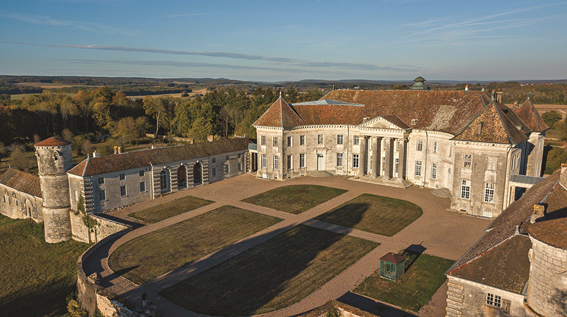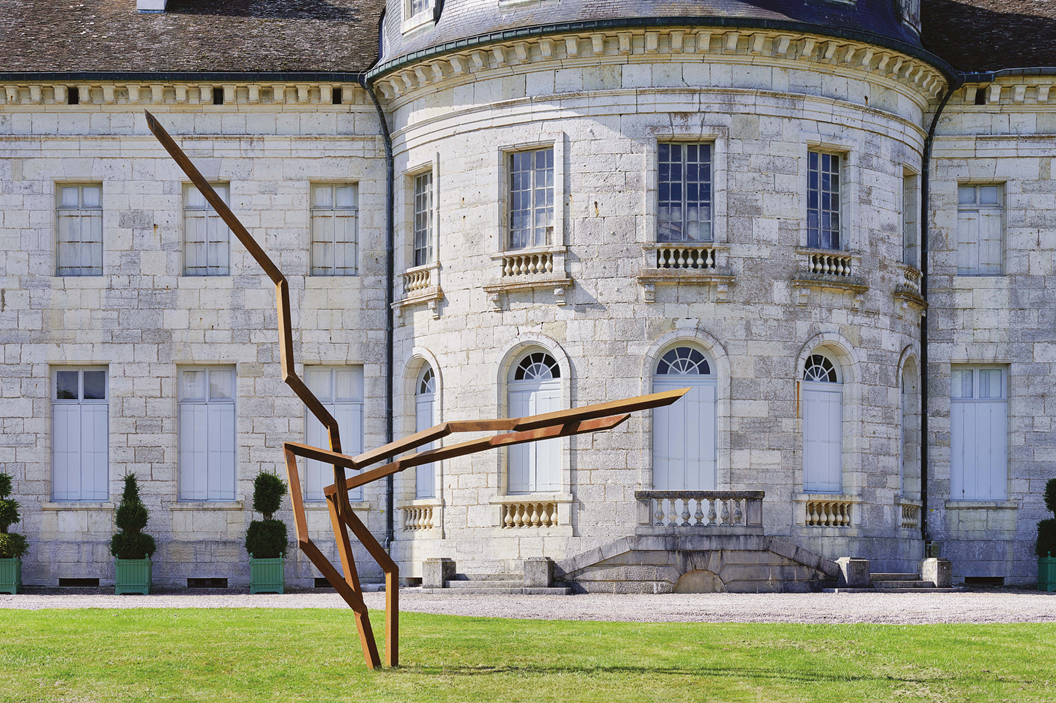Moncley

Built on a hill overlooking the river Ognon, the Château de Moncley replaces an old medieval stronghold which, after having been altered several times, was finally destroyed in 1867.
This majestic residence is one of the great masterpieces of Comtois neoclassicism. It was designed in 1778 and built in the following years by the very talented Bisontinental architect Claude Joseph Alexandre Bertrand (1734-1797) for the Marquis Terrier de Santans (1734-1796), mortar president of the Franche-Comté Parliament and a major owner of Comtois forges and forests. His immediate model, in particular for the facade on the parterre side, is the former Intendance du Roi in Besançon, now the Préfecture du Doubs, built from 1770 to 1777 to plans by Victor Louis. Claude -
Nicolas Ledoux’s influence is also evident, first and foremost in the Royal Saltworks of Arc-et-Senans, built in 1775 and 1779, but also in the Besançon Comedy Hall, built at the same time as the château (1778-1784), whose architect was Alexandre Bertrand.
At the time of its construction, the château was intended as a spring and summer resort at the gates of Besançon. It is set between a main courtyard to the west and a parterre to the east.
To the west, on the courtyard side, the gaze is first drawn to the neo-medieval towers of the two dovecotes, which are extended by the side wings with their powerful bosses. The main body of the dwelling welcomes visitors with a concave facade dominated by the pronaos of an Ionic temple, while on the parterre side, to the east, the heart of the facade consists of the rotunda of the Italian-style drawing room.
A farmhouse and its vegetable garden-orchard to the north and stables to the south complete the ensemble. Both are distinguished by the use of rusticated stonework which enlivens the facades and which, in the courtyard of the farmhouse, is reminiscent of the powerful mannerist architecture of the Italian Renaissance, particularly that of Giulio Romano.
The Château de Moncley has been passed down through each generation of the same family since it was built, and jealously preserves some very rare and exceptional wallpaper delivered in 1783 and 1787. It is listed as a Historic Monument and is regularly open to the public.
Pascal Brunet
Architectur Historian
www.chateaudemoncley.fr
